Fuchsias thrive in shady circumstances where most plants battle, yet produce dozens of vividly colored, dangling, single or double blooms that are teardrop-shaped and hang from trailing stalks from spring to autumn. With their elegant, drooping flowers dangling down like so many diamonds on a luxury chandelier, fuchsias are a fantastic mainstay for hanging arrangements.
Even when you’re in a dilemma about whether to plant those lovely fuchsias inside due to the frost or an asset to your garden, this guide will help you make all of them happen. After following our instructions, you’ll be amazed by how easy it is to grow fuchsias. So let’s get started!
#1. Lights
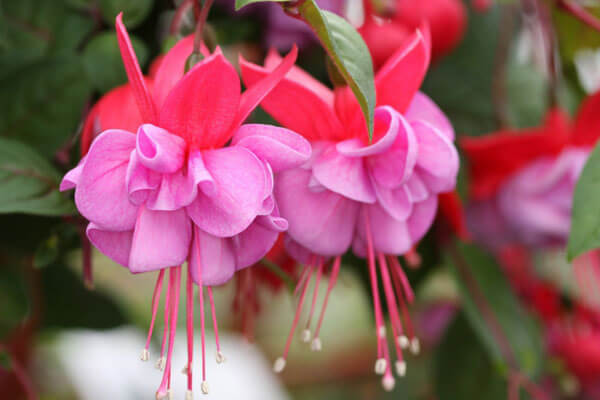 Source: Naturebring –
Source: Naturebring –
- Despite being regarded as shade-loving plants, fuchsias require a lot of sunshine to develop and bloom. Pick a spot outside where the plants will get either morning light straight or afternoon solar filtered.
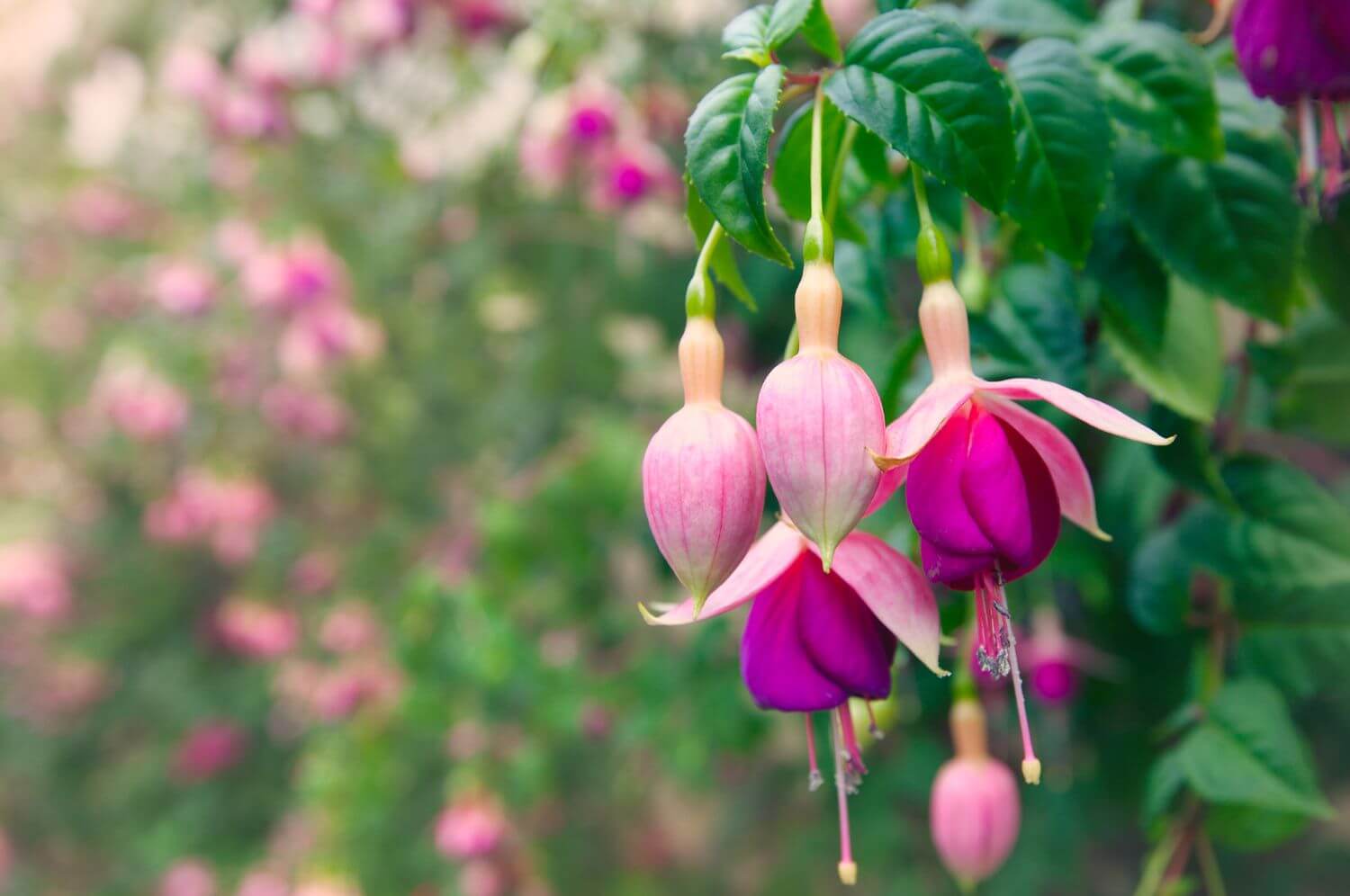 Source: Martha Stewart
Source: Martha Stewart
- However, the need for cover increases as the temperature rises. The plants develop slowly and the flowers are smaller in hot, dry regions. Growers in those locations need to implement automated misting systems and provide adequate weather and shadow protection. Fuchsia thrives when summer days remain below 85 degrees Fahrenheit or when evenings are cool.
#2. Temperature
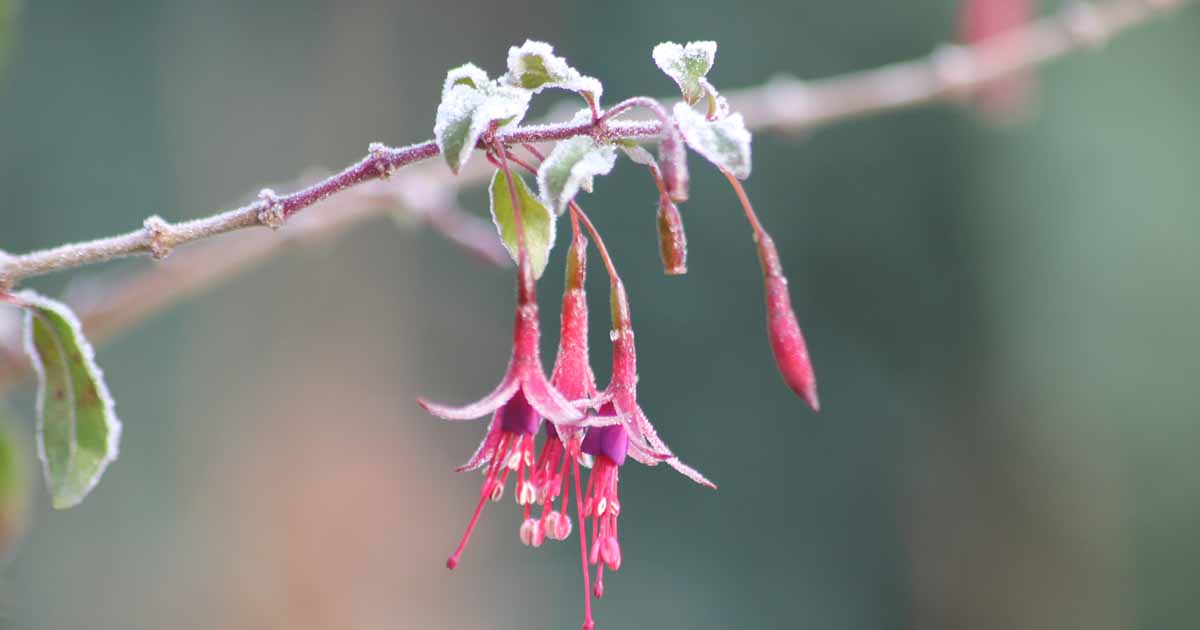 Source: Gardener’s Path
Source: Gardener’s Path
- Before planting a fuchsia, whether in a yard or outdoor receptacles, wait until the weather is consistently above 50 degrees Fahrenheit all night. This is due to how sensitive to weather it is. It grows slowly, between one and two feet per year.
- Additionally, most fuchsias suffer harm from extended freezing temps. Hardy types can withstand temps in the beginning if they are deeply rooted, well-established in the soil, and covered with a thick coating of compost. When the frost happens, those hardy fuchsias will reappear from the stems. Plants in containers must be relocated indoors when the temperature is low.
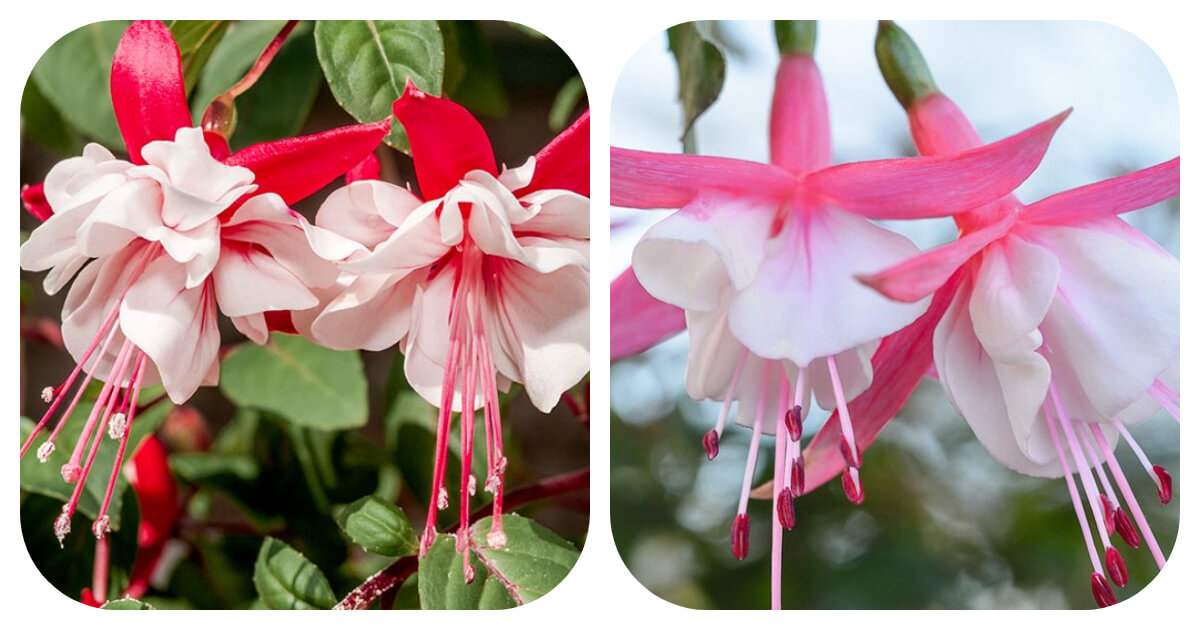
- Types with scarlet and orange flowers require full light. Shade is required for white and delicate fuchsia hanging baskets. In a very sunny window, some small-flowered houseplants can also develop, but they typically don’t thrive as well as they would outside.
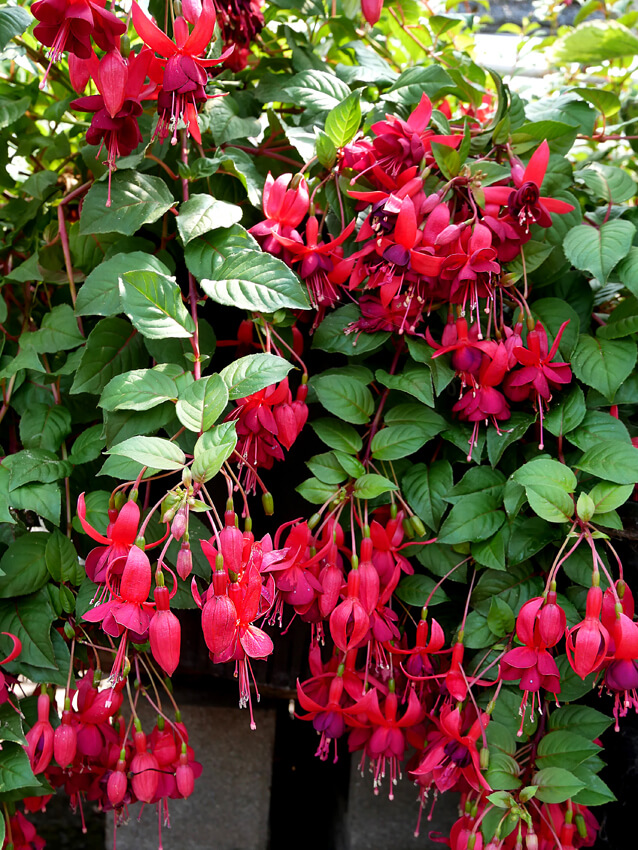 Source: Annie’s Annuals
Source: Annie’s Annuals
- Move the fuchsia to more light if it appears that there is an excessive amount of stems through the leaves. The plants will become more uniform if you routinely rotate them by a quarter turn. In case your yard receives shadows from trees, be cautious about the place to plant the fuchsias until the trees have completely leafed out.

#2. Soil
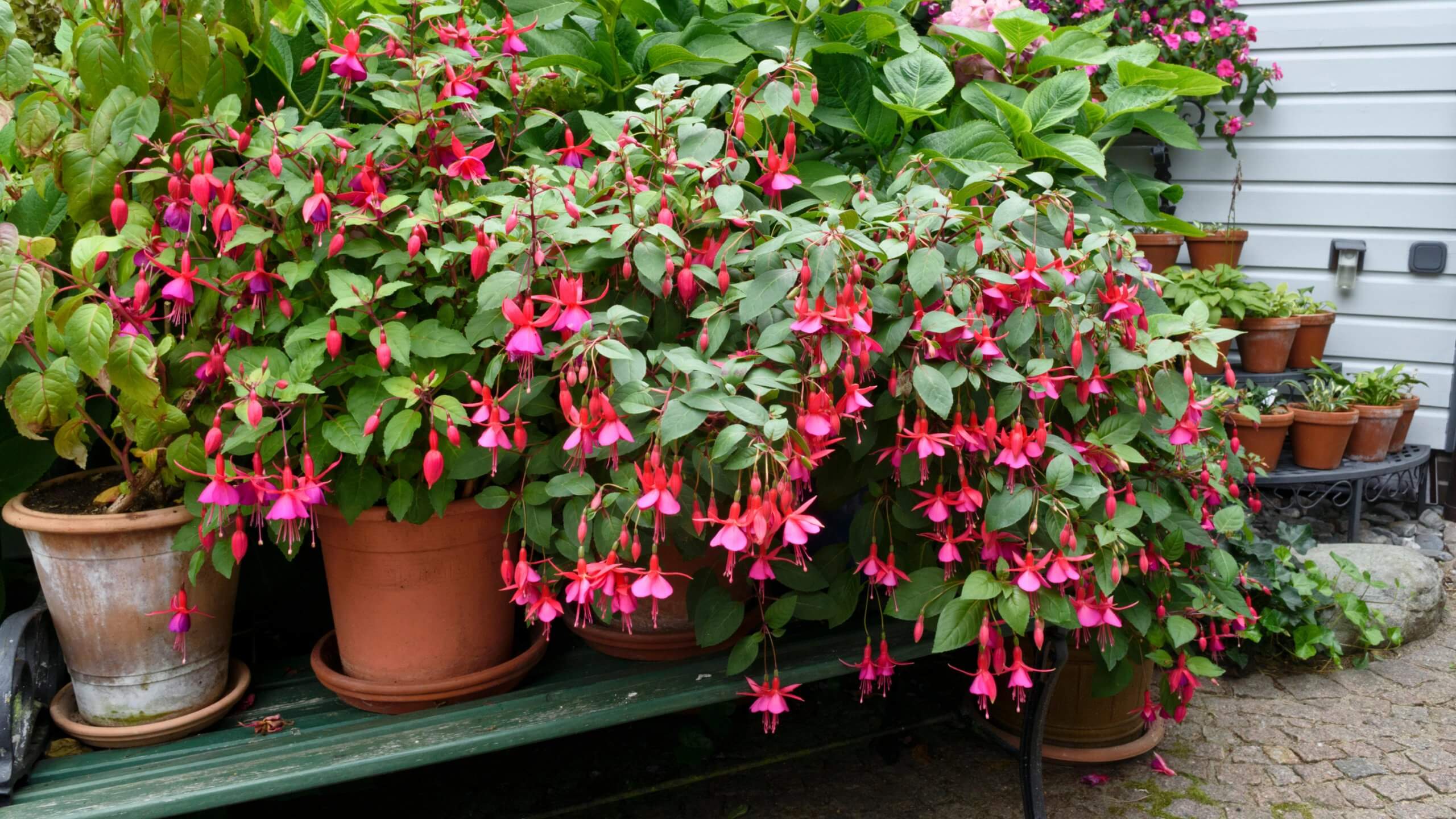 Source: Gardeningetc
Source: Gardeningetc
- Fuchsias should be planted in a yard with humus-rich soil or in containers with excellent aeration using a light organic potting mix. Wooden or fiber receptacles enable the plant to “breathe” and keep the roots cool. Or, terracotta pots are fine as they dry out quickly.
#3. Watering
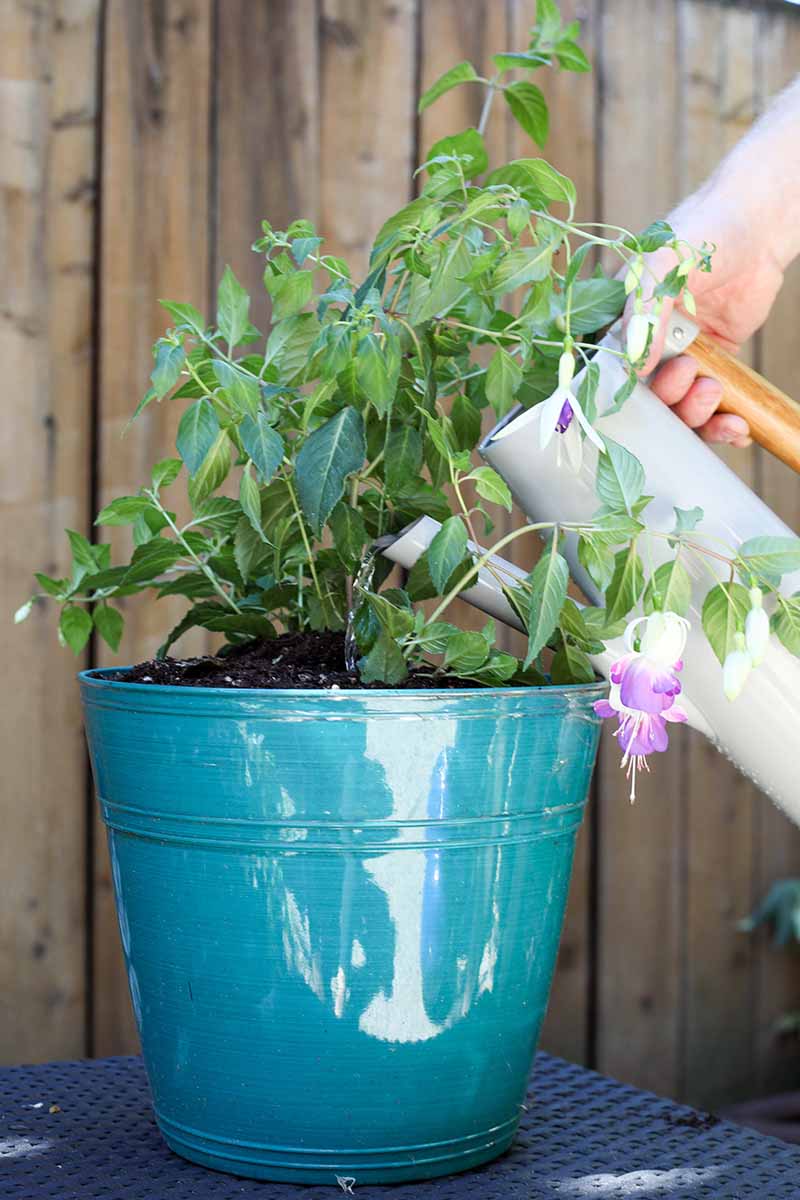 Source: Gardener’s Path
Source: Gardener’s Path
- The stems of fuchsias prefer to be moist but not soggy. When their medium’s top becomes dry, water them. A houseplant in full bloom requires water once a day, or possibly twice in extremely hot and dry conditions.
- If the soil is still moist, avoid watering a wilted plant in the middle of the day. Roots can be choked off! To lower the leaf surface temperature and relocate the plant to a colder area, don’t forget to mist the foliage.
#4. Fertilization
 Source: Plant Addicts
Source: Plant Addicts
- How well your fuchsias develop and blossom in the summer will depend on how well you take care of them in March and April. Establish a regular fertilization plan in the spring, beginning with a light spray once per week. A decent general rule is to mix a balanced water-soluble fertilizer at a balance and give fuchsias once a week. When the plants begin to blossom, you can shift to a fertilizer with a “bloom” formula, but keep adding nitrogen because fuchsias will keep growing.
- Houseplants require regular nourishment as there is little soil to contain nutrition and they’re also watered frequently.
- Withholding fertilizer in the autumn will help plants become more resilient before going inactive for the winter in areas with harsh winters.
- To bloom, most fuchsias require lengthy days. If the weather is moderate, some types, particularly the F. Triphylla hybrids, can bloom all year long.
#5. Prevention Of Pests And Diseases
 Source: Homes To Love
Source: Homes To Love
- Whiteflies can be a major issue for producers in greenhouses and warm regions. Early-stage whitefly populations can be controlled with a diligent project of removing infected foliage, cleaning adults, or flushing with water sprays. Neem oil or other insecticidal products can cut down on numbers but cannot completely eradicate them.
- Don’t overlook the leaf undersides. To avoid burning the delicate foliage and blossoms, test all sprays first.
- Also, beware of the fuchsia gall mite as well, a tiny mite that feeds on the sap of the plant and injects a poison that causes the fuchsia to develop in a shriveled and twisted manner similar to how peach leaves curve. The surfaces of the flowers, leaves, and stalks grow bigger and get prickly and galled. The mites survive and reproduce in these spaces, safe from the hunters.
